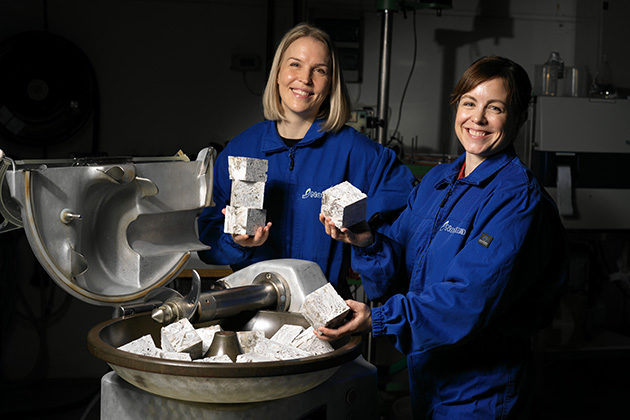Useful tool for value creation from marine side streams

Seafood companies that want to increase the value of their residual raw material and use it in new products must comply with a wide range of regulations, documentation requirements, customs barriers and complicated market structures. A report from Nofima offers help navigating this regulatory jungle.
It is a very complicated exercise for seafood companies to keep track of the rules that apply to the particular product they want to produce and sell. It is also difficult for researchers and authorities to determine which considerations should be taken and how different approval processes work. The Ministry of Trade, Industry and Fisheries therefore asked Nofima to create an overview of the obstacles that marine side streams face in terms of reaching the market.
The report is a collaboration between Nofima, the Institute of Marine Research (Havforskningsinsituttet), the Norwegian Seafood Council (Norges sjømatråd) and SINTEF Ocean with valuable contributions from industry actors. The report contains an overview of relevant regulations, applicable certifications, knowledge communities and much more, gathered and presented clearly in a language that is easily understood.
“We have tried to make this useful for a broad target group of people who are located in completely different places in the residual raw material value chain. Therefore, we decided not to use difficult terminology, and have tried to explain terms in a simple way”, says scientist Birthe Vang, one of the main authors of the report.
The aim is for this report to function as a dynamic document that can be updated regularly so that the overview does not become outdated.
Expertise requirements may prevent utilisation
A manufacturer that wants to utilise its residual raw material has a big job ahead of them. If the residual raw material is to be used for human consumption, it must also be treated as food. This imposes strict requirements on both handling and storage, and all of this must be documented.
The regulations have an important function in ensuring that food is safe for the consumers. Companies must confirm that the raw material is both caught and processed in an approved manner, and different markets require different approvals. Getting an overview of this can be challenging.
For example, to access EU markets, the manufacturer must document that the product has been sold in the EU before May 1997. If it has not, one must apply for ‘novel food’ approval.
Before being sold, the product must also be analysed to ensure that it does not exceed the threshold values for unwanted substances. If one is not able to meet these requirements, the substances must be removed through further processing.
And what are the possibilities of gaining entry into the relevant markets? The commercial side is also crucial – whether you are able to produce enough volume and get a good enough price so that it is worth investing in this production.
All this requires expertise that individual companies are not always able to fully cover themselves. Together with market constraints, this can prevent the utilisation of the marine raw material.
What are marine side streams?
Marine residual raw materials or side streams are defined as not being the main product after gutting and processing fish and shellfish. We are talking about things such as liver, roe, skins, heads and shells. These products can be used for food purposes as long as they are treated as food, and don’t contain unwanted substances above threshold values.
When the raw material is not suitable for use in food products, it is termed an ‘animal by-product’ or ‘food waste’ and falls under Norwegian animal by-products regulation that dictates further use of the raw material based on safety categories.
Market challenges
Norwegian companies that want to export products from residual raw materials or new species, report challenges regarding classification, when the products are considered new, and in relation to unclear customs regulations. If the product is to be exported, it must be clearly stated what kind of product it is. However, there are different national and international classifications and definitions, and different regulations for different parts of the production process. This means that the manufacturer often has to choose which properties to emphasise when classifying the product.
Some requirements are also perceived as inconsistent. For example, dry protein products can enter the EU as duty free goods, while a similar liquid product receives an import duty. Some permits require that one must meet up in person in order to get the approvals one needs.
It is complicated and time-consuming to make changes to customs tariffs and market access, and the uncertainty surrounding this may prevent companies from investing.
“If Norway is to exploit marine side streams and new species such as algae, it is important that regulations and customs tariffs are updated”, says Vang.
“Better facilitation, for example with incentive schemes and business support, would also ease the work of getting approvals through”, she says.
The report’s comprehensive content
In the report, the scientists have tried to provide companies with a clearer overview of the terrain ahead. It includes definitions of marine residual raw materials, by-products and new species, and the relevant regulations related to this. It also provides an overview of the knowledge communities in the field and the trade restrictions one must deal with.
Some countries that could be relevant export targets require that the products are listed as valid import products in order for them to enter the country at all. The countries this applies to are also described in the report.
In addition, one can find an overview of various health certificates that are required, and requirements regarding foreign substances such as pollutant threshold values. One chapter is also devoted to Novel Food requirements, which applies to new types of food exported to the EU after 1997, and another for dietary supplements.
Finally, an overview is given of different raw material groups, the amount of residual raw material contained in each of them, and how much they are utilised. A number of research projects that focus on these topics are also listed.
The report is a resource for all companies that want to explore this possibility, and also for the authorities that follow up the regulations.
Don’t be discouraged!
Although a difficult path may lay ahead before a residual raw material product manages to make its way to the market, the scientist still believes that creating products of higher value from residual raw material is the right way to go. She also expects that there are better times ahead.
“We hope the regulations are adapted continuously, so that they will be increasingly easier for companies to comply with. In addition, the authorities can now get a better overview of where potential problems might occur. This will enable them to provide better facilitation where they can”, says Birthe Vang.
She and her colleagues have learned a great deal while working on this report.
“We have gained a good overview of the raw material, where it comes from, the pollutant threshold values and how it is processed – which is an area I normally work with. Many resources have also been put in place regarding research, but dealing with market access, customs barriers and veterinary certificates is a completely different reality”, says Vang, and adds:
“Having all this insight is a real strength for us. Far more research should also be put into this part of the value chain regarding residual raw material products. Knowledge about bottlenecks and opportunities throughout the entire value chain is also essential in order for these products to see the light of day”, she says.

